Genus Taeniopygia Phylum Chordata Rank Species | Family Estrildidae Scientific name Taeniopygia bichenovii Higher classification Taeniopygia Order Passerine | |
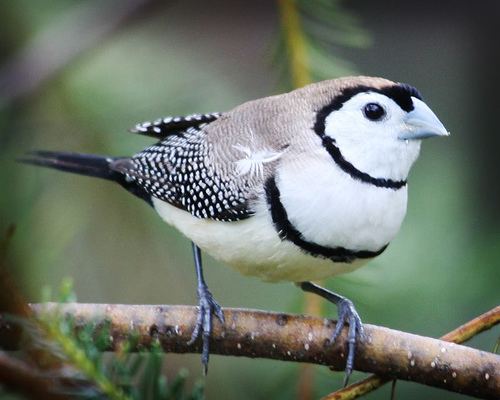 | ||
Similar Bird, Star finch, Long‑tailed finch, Diamond firetail, Estrildid finch | ||
The double-barred finch (Taeniopygia bichenovii) is an estrildid finch found in dry savannah, tropical (lowland) dry grassland and shrubland habitats in northern and eastern Australia. They are sometimes referred to as Bicheno's finch; and also as owl finch, owing to the dark ring of feathers around their faces.
Contents
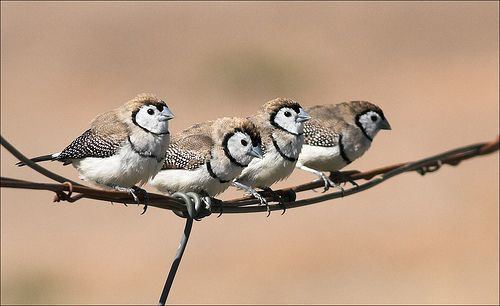
The name of the species commemorates James Ebenezer Bicheno, a colonial secretary of Van Diemen's Land appointed in September 1842.
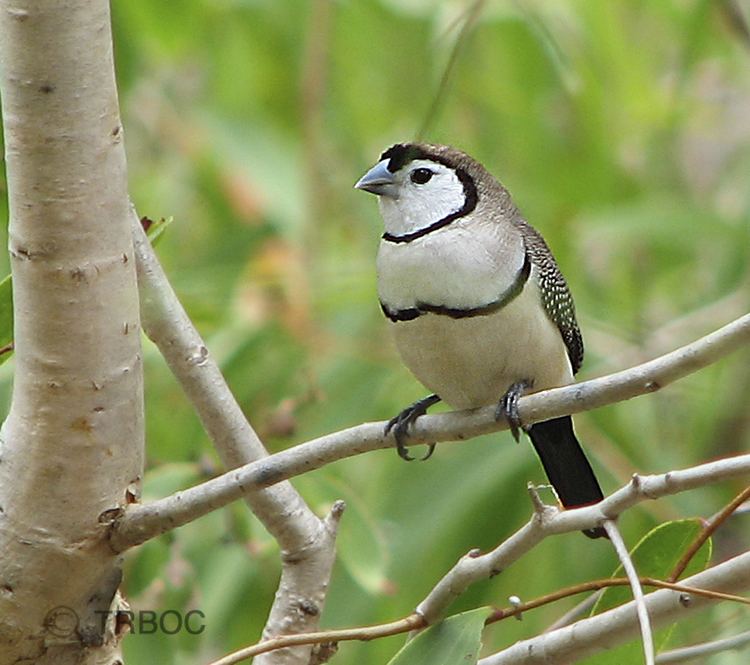
Double barred finches in the chook pen
Subspecies
There are two sub-species:
Characteristics
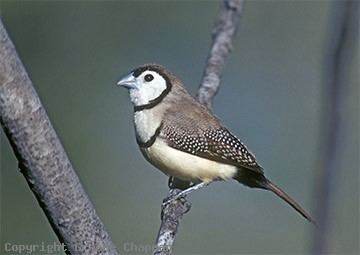
This is a 10–11 cm long munia-like finch with a white face bordered with black, brown upperparts and throat, and white underparts. The throat and underparts are separated by another black line. The wings are patterned in brown and white. The sexes are similar, but juveniles are duller and browner. A less common sub-species with brown or black underparts is known to exist. The call is a soft tet or a louder peew, and the song is a soft fluting, which is somewhat like the Zebra finch.
These gregarious seed-eating birds build their nests in grass, a bush or low tree, and lay four to six eggs.
Origin
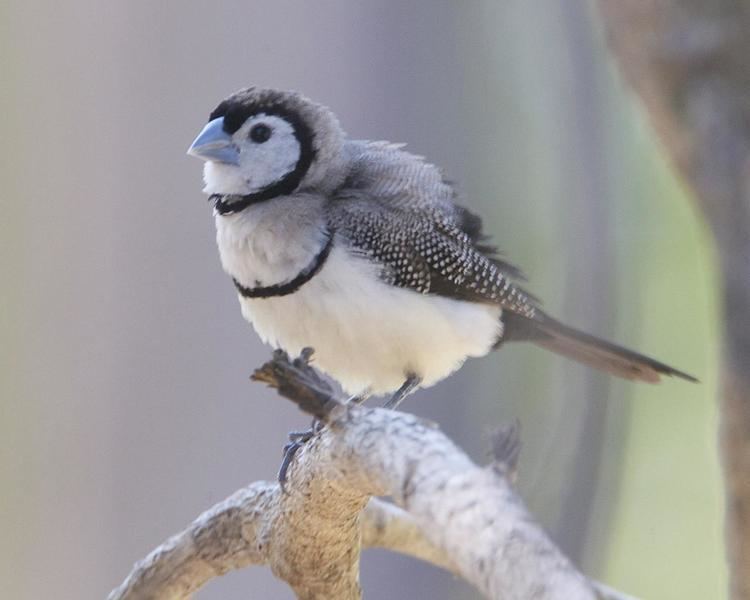
Origin and phylogeny has been obtained by Antonio Arnaiz-Villena et al. Estrildinae may have originated in India and dispersed thereafter (towards Africa and Pacific Ocean habitats).
